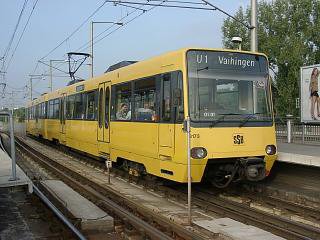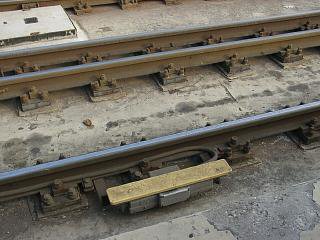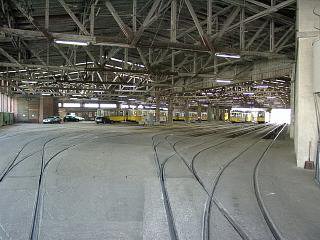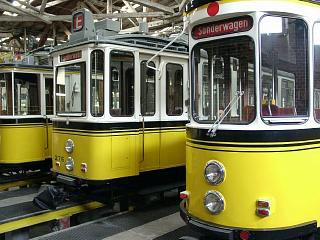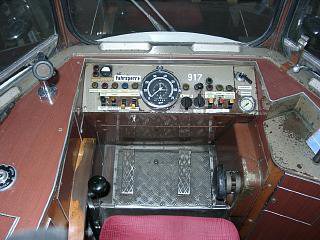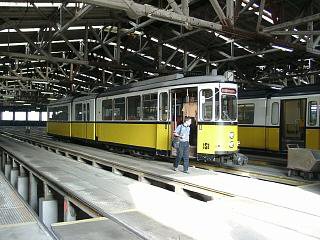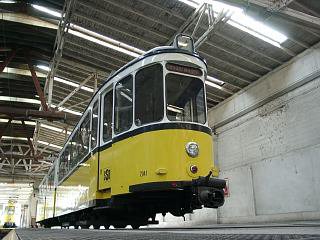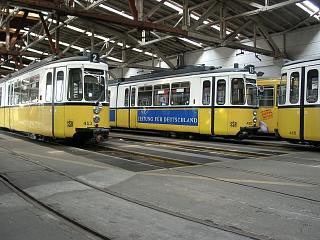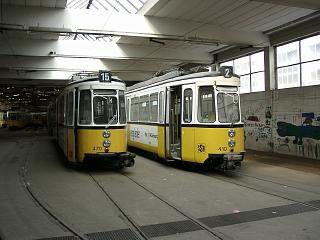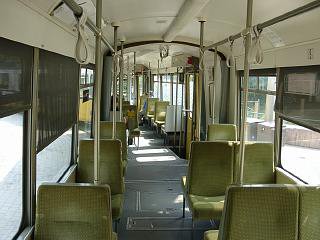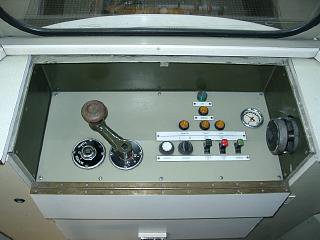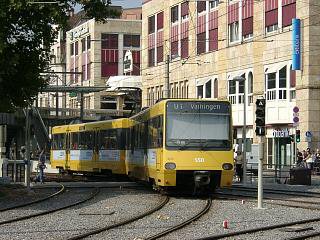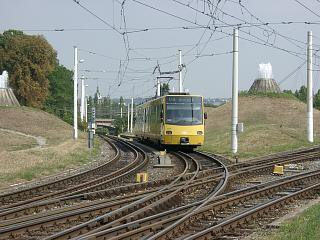"Tram-hiking" through Germany
We arrived to Stuttgart on the first day's evening, but haven't seen anything of the city's public transportation system, because we've had to get to our quarter, which was up on a hillside. Stuttgart lies in a cauldron valley, so most of the things not in the inner city are on a hillside, but we climed up there on foot, not knowing we could have taken tram route 15. By the time we were there, we were dead and done for it - count in that a few hours ago we've climed 768 stairs upwards to the churchtower of the Ulm Cathedral, and then 768 stairs downwards, too, and also that we had these huge backpacks with us!
Stuttgart
I'd like to express my thankfulness
here to SSB AG, its Service Department (Kundenservice) and the crew of
the Cannstatt and Remseck depots for the vist there!
Next day we stood up early in order to make the most out of our one-day stay in the capital of federal state Baden-Württemberg. We had an invitation into the cities last traditional tram depot, and we did not want to be late!
We got to our target using the Stadtbahn ("city rail"), a grandiose LRT network with lots of tunnels and private-right-of-way tracks, and the typical DT8 twin LRV's in the typical yellow livery. This family of vehicles was designed by MAN around 1982, but after three prototypes, manufacturing was taken over by DUEWAG of Düsseldorf. These big bogie cars coupled into twin sets were constantly improved ever since they were introduced in traffic in 1985 (when the Stadtbahn system was launched). Some of the sub-models have folding stairs at the doors, others not, and the newest batch, designated DT 8.10 features AC asynchronous traction, and a new design with a passage between the cars.
Like in most cities we visited, the trams/Stadtbahn of Stuttgart are equipped with the INDUSI ("Induktive Zugbeeinflussung") safety guard system. The yellow-ish plate in the middle is the inductive transmitter of the system. The third rail between the 1435mm-gauge track is for the old 1000mm tram system. You can see leftovers of the narrower gauge all over the place, but not all of the network is usable by trams, because most services were converted to the 1435mm Stadtbahn system since 1985.
Our first destination was the only tram depot still in service, in Bad Cannstatt. We were given a guided visit there due to the kindness of the SBB, the Stuttgarter Strassenbahnen AG, for which we are most thankful! This is an old depot with a wooden roof, which is now a protected technical monument. It will be converted into a museum when the last tram service - route 15 - will be closed.
Apart from the GT4's of route 15, a few heritage cars, like this 1939 Uerdingen car are also stored here.
A 1952 Esslingen car to the left, and probably another one from 1954 to the left, but this one was rebuilt in 1965. Thanks to Martin Rimmele for the hints on these old cars!
Surprisingly, these old cars are all equipped with tachographs.
This two-rooms-and-a-bath car looks like a museum car, but it's not: they use it for towing broken GT4's!
Quite unbelievable such an old beast can tow anything on such steep tracks as route 15! I was told that this is a quite powerful machine!
In the other hall we saw GT4's used as spare parts donors.
Tthis one was still in service!
Interior...
... and shunting controlls of a GT4.
And back to the present: an older DT8 at Wilhelmsplatz.
Thermalbäder is one of the many places, where routes divert on the surface. And there's also a stub-track terminus for short services.
One of the newest Stadtbahn twins, a DT8.10.
Next page: cog-wheel railway and unbelievable ascents with the tram
Back to the top
Back to the beginning
Back to the main page
HamPage
